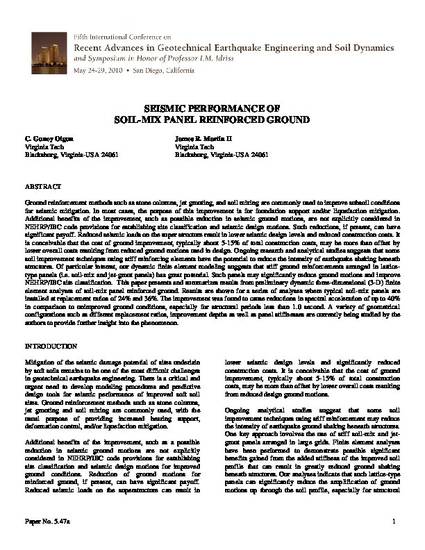
Ground reinforcement methods such as stone columns, jet grouting, and soil mixing are commonly used to improve subsoil conditions for seismic mitigation. In most cases, the purpose of this improvement is for foundation support and/or liquefaction mitigation. Additional benefits of the improvement, such as possible reduction in seismic ground motions, are not explicitly considered in NEHRP/IBC code provisions for establishing site classification and seismic design motions. Such reductions, if present, can have significant payoff. Reduced seismic loads on the super structure result in lower seismic design levels and reduced construction costs. It is conceivable that the cost of ground improvement, typically about 5-15% of total construction costs, may be more than offset by lower overall costs resulting from reduced ground motions used in design. Ongoing research and analytical studies suggests that some soil improvement techniques using stiff reinforcing elements have the potential to reduce the intensity of earthquake shaking beneath structures. Of particular interest, our dynamic finite element modeling suggests that stiff ground reinforcements arranged in latticetype panels (i.e. soil-mix and jet-grout panels) has great potential. Such panels may significantly reduce ground motions and improve NEHRP/IBC site classification. This paper presents and summarizes results from preliminary dynamic three-dimensional (3-D) finite element analyses of soil-mix panel reinforced ground. Results are shown for a series of analyses where typical soil-mix panels are installed at replacement ratios of 24% and 36%. The improvement was found to cause reductions in spectral acceleration of up to 40% in comparison to unimproved ground conditions, especially for structural periods less than 1.0 second. A variety of geometrical configurations such as different replacement ratios, improvement depths as well as panel stiffnesses are currently being studied by the authors to provide further insight into the phenomenon.
© 2010 Missouri University of Science and Technology, All rights reserved.
Available at: http://works.bepress.com/c-olgun/51/
